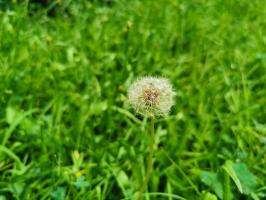Introduction
The rubber tree plant, also known as Ficus elastica, is a popular indoor plant with broad, glossy leaves that can enrich any living space. Propagating a rubber tree plant is an enjoyable and rewarding process that allows you to create new plants from a parent plant. In this article, we will explore different techniques for propagating rubber tree plants.
Propagating rubber tree plant through stem cutting
Stem cutting is the most popular and straightforward way to propagate rubber tree plants. It involves cutting a stem from the parent plant and cultivating it to grow roots and become a new plant. Here are the steps to follow:
Identify a stem with a healthy growth tip and at least one leaf.
Using a sterile, sharp knife or scissors, make a clean cut below the node where the leaf meets the stem.
Remove any lower leaves from the cutting, leaving only a few on the top.
Place the cutting in a jar or glass of water, ensuring that the cut end is submerged.
Leave the cutting in a bright, indirect light and change the water every few days.
After a few weeks, you should observe new roots forming on the cutting. Once the roots are at least an inch in length, you can transplant the new plant into a pot with potting soil.
Propagating rubber tree plant through air layering
Air layering is a less common but equally effective propagation method that involves making a cut on the parent plant and allowing it to grow roots before separating it from the main stem. This method is ideal for plants with thicker stems or when taking stem cuttings is not feasible. Here's how to do it:
Identify a branch on the parent plant that you would like to propagate.
Using a sharp knife, make a small cut on the branch, removing the bark and exposing the inner layer.
Apply rooting hormone to the exposed area to promote root growth.
Wrap the exposed area with moist sphagnum moss and cover it with plastic wrap or aluminum foil to retain moisture.
Secure the wrapping with twine or tape.
After four to six weeks, check to see if roots have developed. If so, cut the branch below the new roots and pot it in a container with potting soil.
Propagating rubber tree plant through division
Division involves separating a mature rubber tree plant into smaller sections, each with its root system, and planting them in individual containers. This method is ideal for plants that have outgrown their container or have multiple stems or trunks. Here's how to do it:
Carefully remove the parent plant from its container and shake off the excess soil to expose the root system.
Using a sharp, sterile knife or pruning shears, cut the plant vertically into sections, ensuring that each division has at least one stem and a healthy number of roots.
Plant each division in a new container with fresh potting soil, and water thoroughly.
Place the newly potted plants in a bright, indirect light and keep the soil consistently moist.
After a few weeks, the new plants should start developing fresh growth.
Conclusion
Propagating a rubber tree plant is a fun and satisfying way to create new plants while beautifying your living space. With the three methods above, you can easily produce healthy new plants and expand your collection. Choose the method that suits your needs and enjoy propagating your rubber tree plant!

 how many times do yo...
how many times do yo... how many planted tre...
how many planted tre... how many pine trees ...
how many pine trees ... how many pecan trees...
how many pecan trees... how many plants comp...
how many plants comp... how many plants can ...
how many plants can ... how many plants and ...
how many plants and ... how many pepper plan...
how many pepper plan...
































